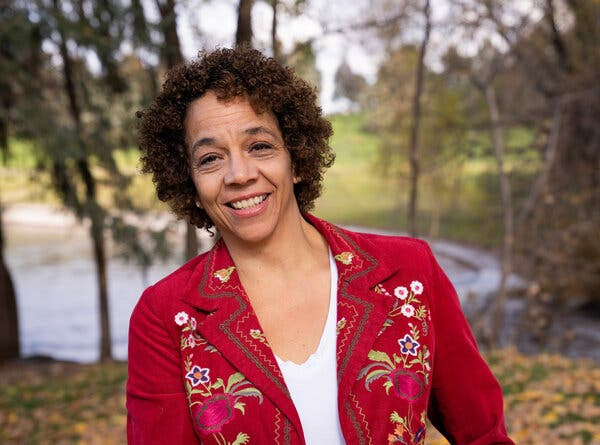Days Earlier, Solidarity With Journalists on Diversity’
‘Missing White Women Syndrome’ Seems Alive, Well
Only Some Report Study on Black News Consumers
A Gilliam Named President of Boston University
Elon Musk’s X Places Ads Next to Vile Hate
L.A. Times Columnists Assess Choice of New Senator
Short Takes: Latino Rebels; Lori Teresa Yearwood; Biden-Harris and African American, Latino ad buys; URL Media; Karen Attiah and Jamal Khashoggi; Milton Allimadi; Detroit chapter of NABJ’s 40th; Bounce TV and Big Brothers-Big Sisters; Associated Press-theGrio partnership; Dolores Sanchez; Joe Johns; arrests of Indian journalists; reporting on foot soldiers of Latin American organized crime; diminished press freedom in Brazilian Amazon; Congolese journalist Stanis Bujakera
Homepage photo: Roy Wood Jr. with Trevor Noah
Donations are tax-deductible.
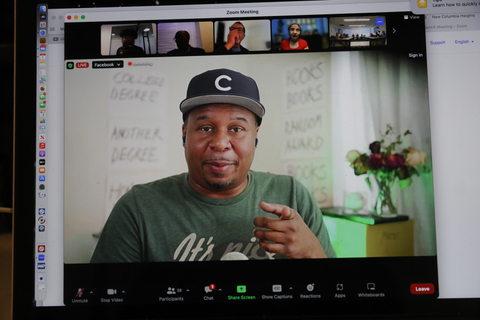
Days Earlier, Solidarity With Journalists on Diversity
Roy Wood Jr., the comedian who spent eight years on “The Daily Show” and electrified this year’s White House Correspondents’ Dinner, is leaving the program after not being named host. He told Journal-isms Thursday he was “hoping to sell a TV show or something.”
Wood appeared Sunday by Zoom at the Journal-isms Roundtable, where he told the group that “probably one of the biggest honors you can have as a Black person is to have other Black people trust you to tell their story.” But as Wood was expressing solidarity with the journalists attempting to report stories he said needed to be told, “the back and forth negotiating was still happening . . . monday/tuesday is when she fell apart,” Wood messaged.
During the Roundtable, Wood’s references to “The Daily Show” were couched in language such as “whenever ‘The Daily Show’ is back or wherever I end up.”
On Thursday, Eric Deggans reported for NPR that Wood had decided to leave the Comedy Central late-night program once hosted by Jon Stewart. “Since he hasn’t been offered the job as permanent host of the show, Wood wants some time to figure out his next act,” Deggans wrote.
Matt Wilstein wrote later Thursday for the Daily Beast, “Roy Wood Jr. started his job as a correspondent at The Daily Show the same day as its most recent host, Trevor Noah. So when Noah surprised everyone —- including Wood -— by announcing his departure from the show after just seven years last fall, the Birmingham, Alabama-born comedian immediately became a frontrunner for the gig.
“But now, with the Comedy Central series set to return on Monday, Oct. 16, Wood has announced that he is leaving as well, after not being offered the host seat.”
Fifty-seven were in attendance in person or on Zoom, with 94 having watched on Facebook as of Friday morning. (Credit: YouTube)
Wood spoke at a Roundtable program on “When the Authorities Abuse Journalists” and was the first speaker at a hybrid in-person and Zoom session at the Washington offices of the Reporters Committee for Freedom of the Press. Fifty-seven were in attendance in person or on Zoom, with 94 having watched on Facebook as of Friday morning. You can watch the session here or in the embedded video above.
“You know, sometimes people look at humor as a gift,” Wood said, “but I think in a lot of instances, with the stories we’re trying to cover, especially now when you look at what I consider to be a fight against diversity — the empire is striking back against us now, so this idea of diversity and inclusion where now it’s time to really see who the allies are, we’re starting to realize how many allies we don’t have. So the stories that you all write, those are the stories that I think are essential, and those are the stories that I think matter.”
Wood, 44, holds a degree in broadcast journalism from Florida A&M University, and he shouted out journalists on the Zoom whom he knew from those days, such as FAMU alumnus Marlon Walker of the Marshall Project and Pearl Stewart, a veteran who taught journalism at the school. The comedian comes from a journalism family. His late father, Roy Wood Sr., was a broadcaster and co-founder of the National Black Network, and an older brother, Arthur Wood, also on the call, has been general manager of WYCC-TV, a PBS station in Chicago, among other roles. A half-brother, Roy L. Wood, is a former television news anchor who spent “30 years in the craft as well.”
“My father understood how to bottle his anger in a way where you could listen to him so you wouldn’t feel berated as a Black person or a white person,” Wood said. “You can still get the information within the anger. I never had that ability, so I figured, all right, well if I can make you laugh then I can try to . . .” He said his entry point was discussing sports, as his first vehicle, because in “hard news there’s not a lot of place for humor, but sports allowed little pockets where you could be a little silly.”
At the White House Correspondents’ Dinner (video), “you know everybody there is playing angles,” Wood said. “The thing that’s weird about it is that you start finding out how many journalists are not sincere in what they cover and how many Republicans really don’t believe what they be spitting, they just trying to be cool; they trying to get invited to the table.” He name-checked longtime White House reporter April Ryan, now with theGrio, for her guidance on how to approach the event and said the team accompanying Vice President Kamala Harris — though not Harris herself — was nervous about what he might say.
“It was fascinating to hear Roy go through his process and preparation, especially as he planned to perform at the White House Correspondents’ Dinner,” remarked veteran journalist Lynne Adrine after the Roundtable. “He is careful, intentional and extremely well-informed.”
Wood wrote Thursday on X, formerly Twitter, “I’m grateful to Trevor Noah, Paramount, and especially Comedy Central for giving me the runway to also produce three one-hour stand-up specials, for letting me host two award-winning podcasts, letting me write & shoot my own comedy pilot, write a film, and much, much more. I look forward to finding other ways to collaborate with them down the road.”
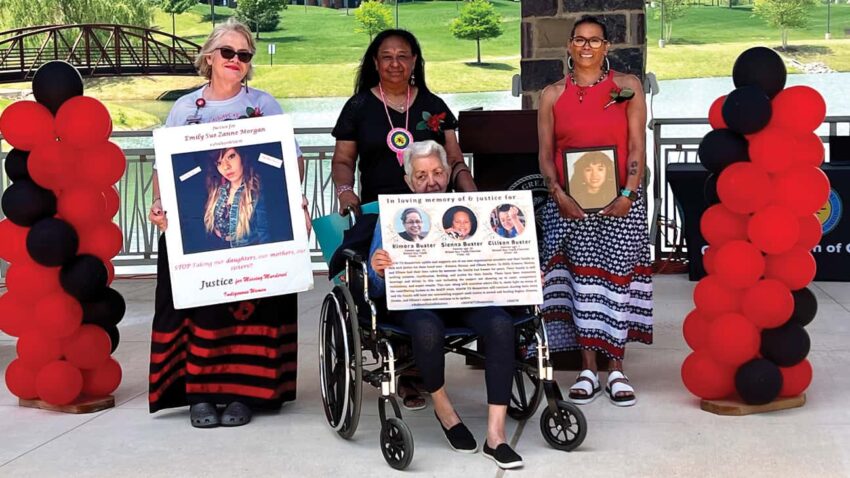
‘Missing White Women Syndrome’ Seems Alive, Well
Sherri Parks, then an American Studies professor at the University of Maryland, coined the term “Missing White Women Syndrome,” according to Sarah Stein, cofounder of the Center for the Resolution of Unsolved Crime. Stein writes that the late Gwen Ifill popularized it at a journalism conference in 2004 when, mocking newsroom executives, she quipped: “If it’s a missing White woman, you’re going to cover that, every day.”
Ifill’s successors at the “PBS NewsHour,” which she co-hosted, could have been the only mainstream national newscast that didn’t go all in this week on the disappearance and subsequent rescue of 9-year-old Charlotte Sena (pictured, below) in upstate New York. Yes, Charlotte is white. The “NewsHour” didn’t cover it, but Googling Charlotte’s name gets you 21,000 mentions on Google News.
Is it another example of “Missing White Women Syndrome,” which posits that a missing white woman or girl is far more likely to receive coverage than a woman of color?
 It’s not a question that the networks are willing to confront publicly. Queries to CNN, NBC and CBS went unanswered, while ABC, where Kim Godwin became the first African American network president two years ago, issued a terse “no comment.”
It’s not a question that the networks are willing to confront publicly. Queries to CNN, NBC and CBS went unanswered, while ABC, where Kim Godwin became the first African American network president two years ago, issued a terse “no comment.”
However, Natalie Wilson, co-founder of the Black and Missing Foundation, messaged this:
“We have seen firsthand how media coverage, law enforcement resources and community engagement can make all the difference in someone being found. It’s just that powerful!
“For 15 years, we, at the Black and Missing Foundation have been pounding the pavement with a goal – to make our missing Black and Brown men, women and girls household names, too.
“Every day we have families turning to us for help. Our hearts break when we think of children like Arianna Fitts of San Francisco, Calif., who has been missing for seven years after her mom was found murdered. Let us not forget Keeshae Jacobs, Tiffany Foster, Alexis Ware, Joniah Walker, Jennifer Blackmon, Relisha Rudd, Nakyla Williams, and the list goes on.”
Asked how much media attention those cases have received, Wilson said, “They have received local and some national press, however, sadly, they are not yet household names. “
As Kendra Germany-Wall and Christian Chaney reported in June for Chocktaw Nation, “In 2021, [Interior] Secretary Deb Haaland announced the formation of a new Missing & Murdered Unit (MMU) within the Bureau of Indian Affairs Office of Justice Services (BIA-OJS) to provide leadership and direction for cross-departmental and interagency work involving missing and murdered American Indians and Alaska Natives.
“At the time of the announcement, approximately 1,500 American Indian and Alaska Native missing persons had been entered into the National Crime Information Center throughout the U.S. and about 2,700 cases of murder and nonnegligent homicide offenses had been reported to the Federal Government’s Uniform Crime Reporting Program.”
Also off much of the radar are missing LGBTQ+ people. Matt Lavietes reported for NBC Out in 2021 on Lazarus Rise, a Colorado man who launched a Facebook page to help solve cases involving LGBTQ people who are missing or have died but have yet to be officially identified.
“LGBTQ people — and transgender and gender-nonconforming people in particular — disproportionately face discrimination and violence in the United States,” Lavietes wrote. “At least 50 trans or gender-nonconforming people, the majority of them Black, have died by violence this year, making 2021 the deadliest year on record for trans people, according to the Human Rights Campaign, which has been tracking fatal anti-trans violence since 2013.
“Rise’s missing LGBTQ persons Facebook page acknowledges this, noting that while the page is dedicated to finding all missing LGBTQ people, it has a ‘strong focus on missing and unknown transgender/gender non-conforming individuals.’ “
- Devan Markham and Marni Hughes, News Nation: Jared Shadeed: Immigration attorney vanishes on road trip (Sept. 7)
- Brianna Scott with help from Jonathan Franklin, NPR: Missing White Woman Syndrome: The Media Bias Towards Missing People of Color (June 8)
- Jamila White, Black and Missing Foundation: The consequences of “Missing White Woman Syndrome” (Aug. 9)
- Rae Williams, Black and Missing Foundation: Local missing woman’s family highlights the crisis of missing Black women (Sept. 22)

Only Some Report Study on Black News Consumers
When the Pew Research Center released a study of how Black news consumers view the news they read, hear or see, some news organizations found that information worthy of sharing with their publics. Others, surprisingly including some of the largest newspapers with the biggest news budgets and newsholes, did not: The New York Times, The Washington Post, The Wall Street Journal and the Los Angeles Times were in the latter category.
“We can’t and don’t cover every study,” replied Naseem Amini of The New York Times, which since 1897 has boasted, “All the News That’s Fit to Print.”
The Washington Post ran an Associated Press story on the study by David Bauer on its website, but not in its print edition. That story quoted Journal-isms. Spokespeople from the Post, Los Angeles Times and Wall Street Journal, each employing designated media reporters, did not respond to the query.
As reported in this space last week, Pew found “that 63% of Black Americans say news coverage about Black people is often more negative than news about other racial and ethnic groups. While few are optimistic that will change in the foreseeable future, many see ways in which that coverage could be improved. And one factor consistently stands out – making sure that all journalists are informed about the issues affecting Black people.”
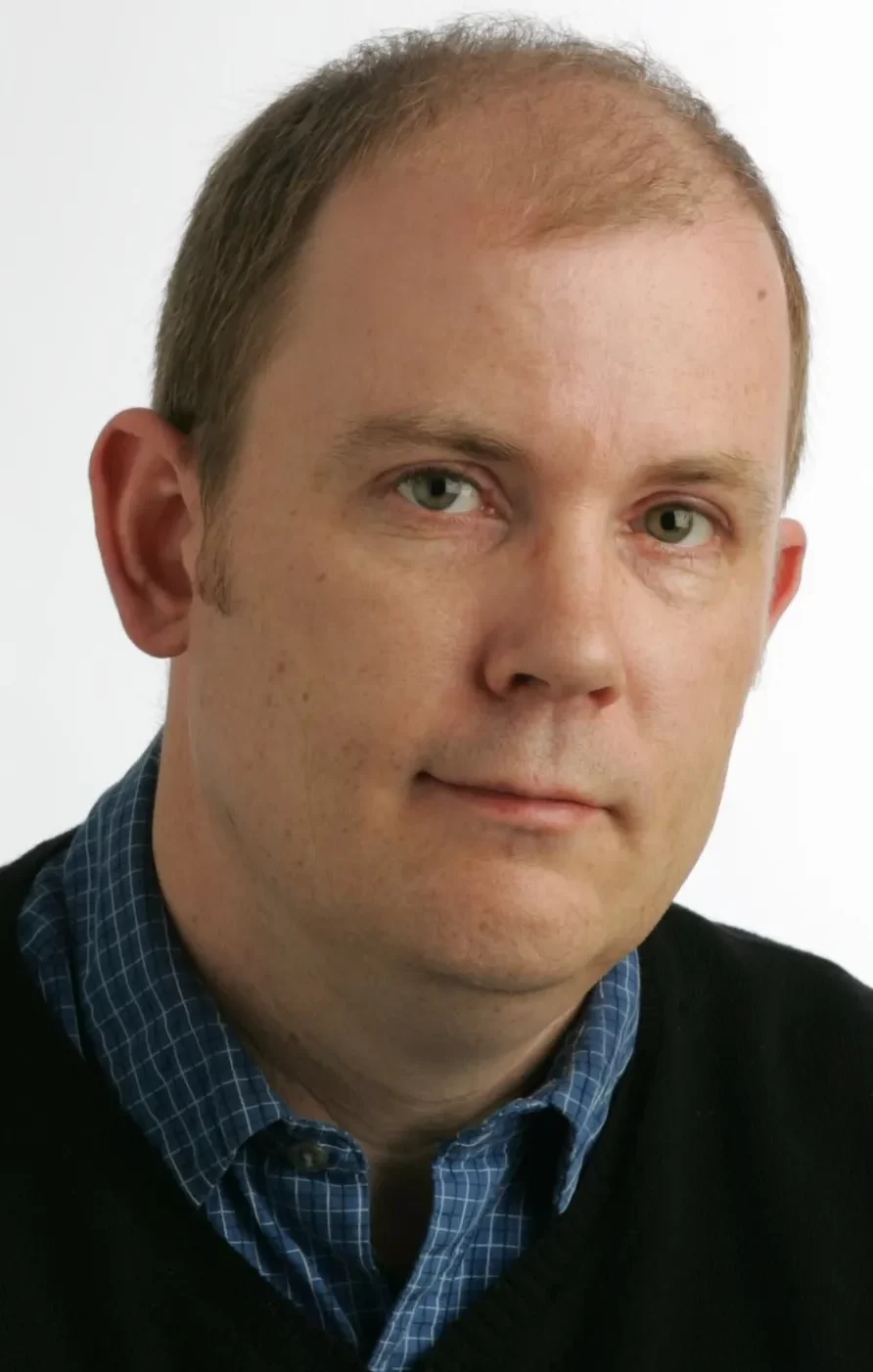 At the Seattle Times, Brier Dudley (pictured), editor of newspaper’s Save the Free Press Initiative, led his Sept. 27 column with the study.
At the Seattle Times, Brier Dudley (pictured), editor of newspaper’s Save the Free Press Initiative, led his Sept. 27 column with the study.
“It’s terrible to hear that so many Black Americans feel they are poorly covered and misrepresented, especially when building trust is critical to the news industry’s survival,” Dudley messaged. “Every newsroom leader ought to read Pew’s report and find ways to improve this situation. I hope the lack of stories about the report reflects how little the industry covers itself, and not a lack of concern.
“I’m glad I could share the report through our Save the Free Press newsletter and column but wish I’d had more time to report on it and get reaction. No doubt the report prompted conversations and I hope those lead to more coverage ahead.”
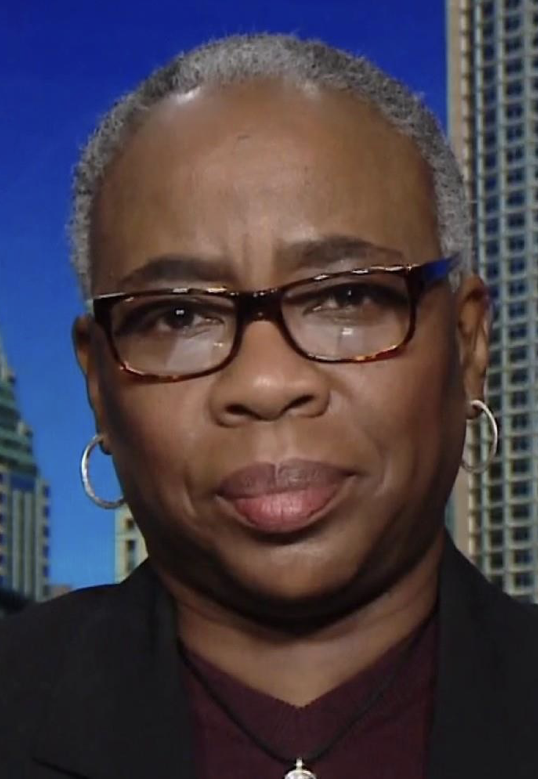 Renee Graham (pictured) of the Boston Globe made the study the subject of her “Outtakes” newsletter Thursday. She referenced the Kerner Report of 1968, a document from a government commission that said the news media were partly responsible for the uprisings of the 1960s because they failed to present an accurate picture of the Black community. Graham also recalled her own experiences covering Black communities whose residents asked, “How come you only come around when something bad happens?”
Renee Graham (pictured) of the Boston Globe made the study the subject of her “Outtakes” newsletter Thursday. She referenced the Kerner Report of 1968, a document from a government commission that said the news media were partly responsible for the uprisings of the 1960s because they failed to present an accurate picture of the Black community. Graham also recalled her own experiences covering Black communities whose residents asked, “How come you only come around when something bad happens?”
Graham wrote, “It’s never been about ‘good’ versus bad stories in Black communities. It’s about the balance, which has always been egregiously lacking. Have there been incremental improvements in coverage? Sure. But we also know that when it comes to America and race, change is glacial, and systemic change without white opposition is nearly nonexistent. That the Kerner report’s revelations or conversations like those I had with Black residents in Liberty City, Fla., and Boston’s Roxbury neighborhood haven’t moved the needle significantly is hardly breaking news. But it’s a dismaying headline that the mainstream media — which continues to lose viewers, readers, and trust — keeps ignoring at its own peril.”
Andrew Grant of the Pew center also notes this other coverage:
- Deborah Barfield Berry, USA Today: Black people’s distrust of media not likely to change any time soon, survey found. (Sept. 26)
- Russell Contreras and Sara Fischer, Axios: Black Americans see bias in media despite changes, survey says (Sept. 26)
- Cheyanne M. Daniels, The Hill: 39 percent of Black Americans say news about them is ‘racially insensitive’ (Sept. 26)
- Candace McDuffie, The Root: New Survey Reveals Black People Still Don’t Trust Media When It Comes to Our Portrayal (Sept. 27)
- Cathy Applefeld Olson, Forbes: Majority Of Black Americans Believe News Media Is Racist (Sept. 27)
- Edwin Rios and agency, the Guardian: Majority of Black Americans say they are depicted unfairly in news – study (Sept. 27)
- Nigel Roberts, BET.com: Black Americans See News Coverage About Them As ‘Racist Or Racially Insensitive,’ Study Says (Sept. 27)
- Stuart Varney, Fox Business: Negative media coverage of Black Americans is the ‘heart and soul’ of the issue: Jack Brewer (video) (Sept. 27)
- Ezekiel J. Walker, Black Wall Street Times: Pew Research finds most Black folks are critical of news depictions (Sept. 26, updated Oct. 3)
Meanwhile the American Press Institute offers these pieces on improving diversity of coverage:
- Jahna Berry, Mother Jones: The Story Behind Mother Jones’ First-Ever Reader Listening Sessions
Also of note:
- Yesica Balderrama, Latino Rebels: Audience Declines in Traditional U.S. Latino and Black Media Continue (Sept. 8)
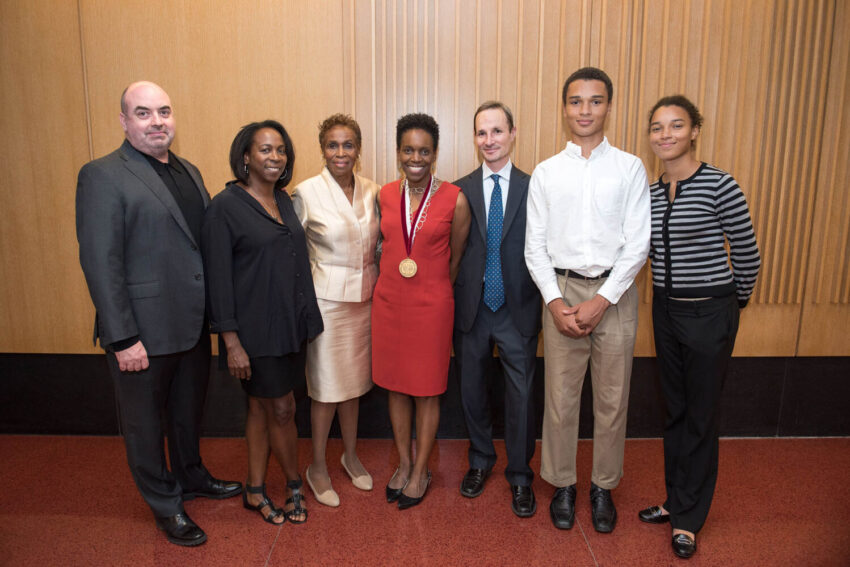
A Gilliam Named President of Boston University
An announcement Wednesday that Dr. Melissa Gilliam will become the first woman and first African American president of Boston University has drawn an outpouring of good wishes and admiration on social media. Not least of the reasons is that Gilliam is a daughter of retired Washington Post journalist Dorothy Gilliam and her late husband, noted artist Sam Gilliam.
“WOWZA! And go B.U.!!!,” wrote fashion writer Teri Agins. “This is major– and generational trailblazing… Dr. Melissa Gilliam is the daughter of one of our most accomplished and trailblazing — Black journalists! (p.s. And both are as lovely and stylish as can be!!)”
Bonnie Newman Davis, managing editor of the weekly Richmond (Va.) Free Press, added Thursday, “The news came out just in time for the Richmond Free Press to include it on our front page! My publisher, Jean Boone tipped me off. Mrs. Boone is a BU grad.”
Gilliam, 58, who begins the role on July 1, worked as a pediatric and adolescent gynecologist in Chicago before becoming a higher education administrator. She is currently executive vice president and provost at Ohio State.
She spoke with Doug Most of Boston University about her upbringing:
 “Growing up in the nation’s capital provided Gilliam, who has two sisters, with a particular view of the world,” Most wrote. “She was raised in Mt. Pleasant, a neighborhood known for its cultural and economic diversity. She also grew up among artists, writers, and politicians. One of her seventh-grade classmates was a boy named James Ginsburg, who happened to be the son of a fast-rising lawyer and outspoken women’s rights activist named Ruth Bader Ginsburg. (Photo credit: Jason Smith)
“Growing up in the nation’s capital provided Gilliam, who has two sisters, with a particular view of the world,” Most wrote. “She was raised in Mt. Pleasant, a neighborhood known for its cultural and economic diversity. She also grew up among artists, writers, and politicians. One of her seventh-grade classmates was a boy named James Ginsburg, who happened to be the son of a fast-rising lawyer and outspoken women’s rights activist named Ruth Bader Ginsburg. (Photo credit: Jason Smith)
“ ‘I remember getting dropped off at their apartment, and then we sat on the couch, and mom said goodbye, and we walked across to a concert at the Kennedy Center,’ Gilliam says. ‘It is not until you get older that you realize these experiences are distinct and formative.’
“But that kind of experience — being surrounded by powerful women in a diverse city like Washington — helped her appreciate later in life that she could be anything she wanted to be, just like the mom of her classmate, who went on to become the second woman US Supreme Court justice. ‘You just had to decide what it is you wanted to do,’ Gilliam says.
“Her parents were both role models as she blazed her own trails. In 1961, her mother, Dorothy Gilliam, broke ground when she was hired by the Washington Post. As the Post wrote in a 2019 profile of her, ‘Whether she was reporting on integration of the University of Mississippi in 1962 or pushing newsroom managers to hire more women and minorities, Gilliam committed her career to sharing a broader view of American life.’
“The lessons her father Sam Gilliam, who died in 2022, imparted to her were different. Sam Gilliam came of age in a period of great experimentation for abstract painting and in a time of political and social turmoil. As the New York Times wrote, ‘but even in this context he was especially daring.’
“ ‘We grew up with a very strong humanitarian focus,’ Gilliam says. ‘And a huge focus on the impact that one could have in the world.’
“The lessons her parents taught her and her sisters have stuck with her. She’s aware of her own history-making journey — the first Black provost at Ohio State and soon to be the first Black and first female president at BU — but she’s more mindful about why there are still glass ceilings to smash today.
“ ‘What is more frustrating to me is that in this day and age, I am still doing things that are first,’ she says. ‘That’s a bigger concern, that there’s any trailblazing aspect to what I do. There is so much talent and human potential, I figure in 2023 it should be commonplace. And it just isn’t.’ . . .”
- Mitchell McCluskey, CNN: Harvard University inaugurates Claudine Gay as school’s first Black president
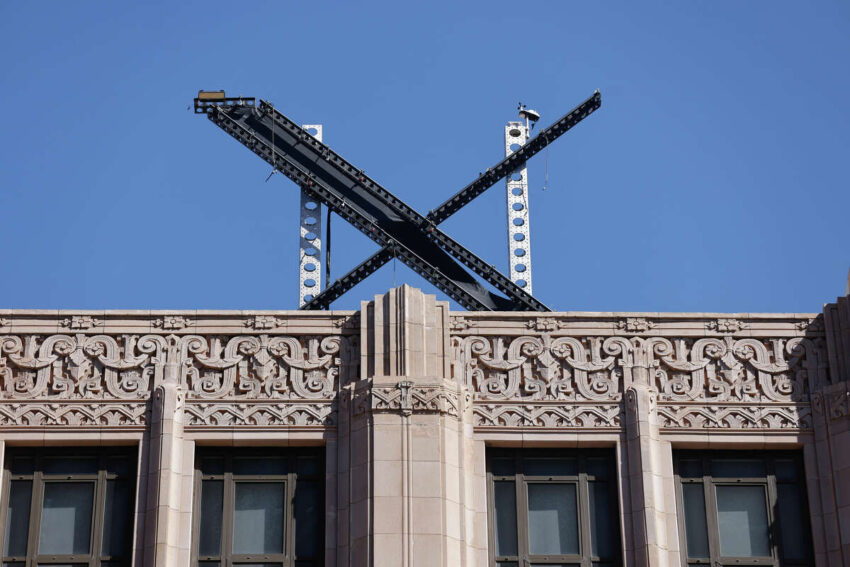
Elon Musk’s X Places Ads Next to Vile Hate
“The Elon-Musk owned social media platform, X, confidently claims that it harnesses industry-leading brand safety tools to ensure a positive experience for advertisers on the platform — but a quick glance at where advertisements for prominent brands actually appear tells an entirely different story,” Oliver Darcy reported Thursday for CNN.
“Over the last 24 hours, a Reliable Sources review found advertisements for a cohort of major companies and organizations have appeared directly on the verified profile account of VDARE, an openly racist, white supremacist outlet that publishes some of the most vile content on the internet.
“Those companies and organizations include Amazon, Samsung, the Denver Broncos, Cox Communications, STARZ, The Wall Street Journal, The Michael J. Fox Foundation, the University of Missouri, New York Waterway, Axios, Puck, Ad Age, Morning Brew, and the Asian Development Bank.
“The fact that X permits a publication like VDARE to operate a verified account on the platform — giving it access to monetization and boosting its visibility to users — is in itself seriously concerning (Facebook and YouTube, for instance, have banned the outlet from their platforms). But that it apparently also believes it is appropriate to monetize the outlet’s vicious hate speech says volumes not only about the company’s ethics, but its supposed commitment to brand safety. . . .”
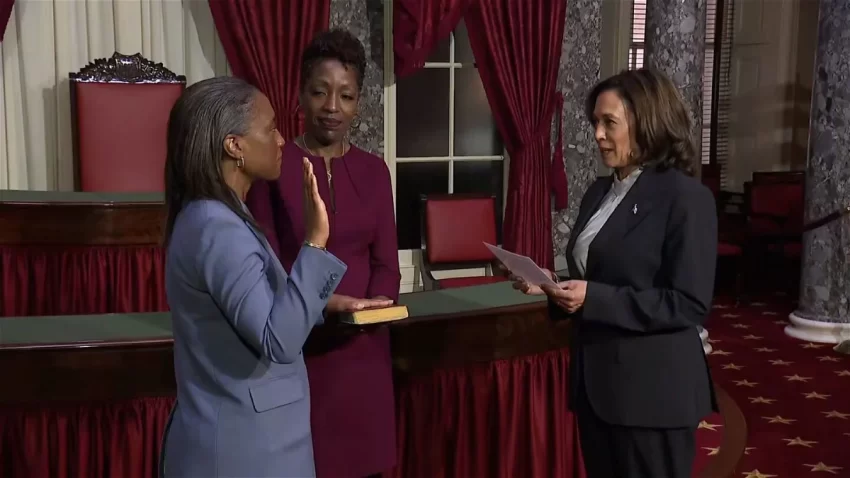
L.A. Times Columnists Assess Choice of New Senator
“Acting with dispatch, Gov. Gavin Newsom this week appointed Laphonza Butler, a veteran labor organizer and political strategist, to replace the late Dianne Feinstein in the U.S. Senate,” the Los Angeles Times reported Wednesday.
“The move fulfilled a promise Newsom made to choose a Black woman, filling a notable void.
“With Vice President Kamala Harris’ exit, there were no Black women among the 100 members of the august chamber. In fact, before Butler, there had been only two Black women senators in the history of the country.
“Butler, 44, was sworn into office Tuesday by Harris, a friend and former political client. She is the first openly LGBTQ+ person of color to serve in the Senate.
“Times columnists Erika D. Smith, Anita Chabria and Mark Z. Barabak discussed the history-making selection, speculation about Butler’s future and the problems Newsom created for himself filling Feinstein’s seat.
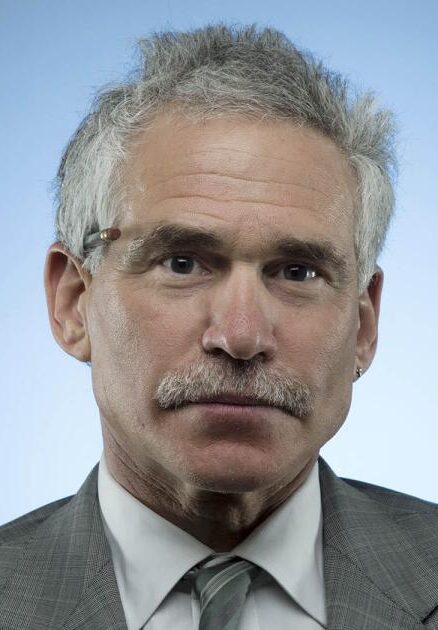 “Barabak (pictured) So, a pretty big deal for California and Newsom. How come there isn’t a more celebratory mood shrouding our governor?
“Barabak (pictured) So, a pretty big deal for California and Newsom. How come there isn’t a more celebratory mood shrouding our governor?
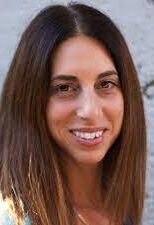 “Chabria (pictured): I’m not sure there isn’t, behind the scenes anyway. Appointing Butler was an elegant solution to a big political problem. He did not want to anger Reps. Adam Schiff (D-Burbank) or Katie Porter (D-Irvine) — or their powerful allies and donors — by giving the seat to Rep. Barbara Lee (D-Oakland).
“Chabria (pictured): I’m not sure there isn’t, behind the scenes anyway. Appointing Butler was an elegant solution to a big political problem. He did not want to anger Reps. Adam Schiff (D-Burbank) or Katie Porter (D-Irvine) — or their powerful allies and donors — by giving the seat to Rep. Barbara Lee (D-Oakland).
“That was always about Newsom’s political future, not the will of the people, as he claimed.
“But as Erika pointed out, there was a lot of anger the governor would try to talk a Black female politician into undermining Lee by serving for a few months as senator, then stepping aside with nothing to show for it.
“So Newsom was, late in the game, forced to drop that placeholder idea, but not before a backlash solidified — leaving him few options.
“Butler is somewhat genius in that respect. She is liked in Democratic circles and powerful — nationally, not just in California. The strongest complaint against her so far is that she owns a house in Maryland. I think the governor is probably celebrating.
“What do you think, Erika?
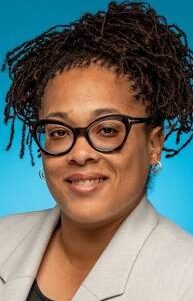 “Smith (pictured): Butler is definitely an inspired choice. She checks a lot of boxes — and not just demographically. Her career includes stints in labor, political, corporate and academic circles. She has had a major impact in all of them, ultimately making the lives of working-class people in California better.
“Smith (pictured): Butler is definitely an inspired choice. She checks a lot of boxes — and not just demographically. Her career includes stints in labor, political, corporate and academic circles. She has had a major impact in all of them, ultimately making the lives of working-class people in California better.
“And, yes, I love that she is a Black queer woman in her mid-40s, because I also am a Black queer woman in my 40s, and it’s nice to finally have some representation in the Senate.
“So I’m happy. But that doesn’t mean everyone is happy. . . .”
- Hayes Brown, MSNBC: Laphonza Butler is a Rorschach test for Democrats
- Mary C. Curtis, Slate: Dianne Feinstein’s Replacement Is Here. Who Is She? (podcast)
- LZ Granderson, Los Angeles Times: Democrats should be putting Black women like Laphonza Butler on the ballot
- Emil Guillermo, Asian American Legal Defense and Education Fund: For nation’s most Asian American state, Newsom’s cynical choice to replace Feinstein in the Senate
- Akela Lacy, the Intercept: Laphonza Butler’s Emily’s List Spends Millions on Kamala Harris While Laying Off Grassroots Staff
- Erika D. Smith, Los Angeles Times: Newsom’s cynical pitch: Hey, you there, Black woman. Can you keep Feinstein’s seat warm?
Short Takes
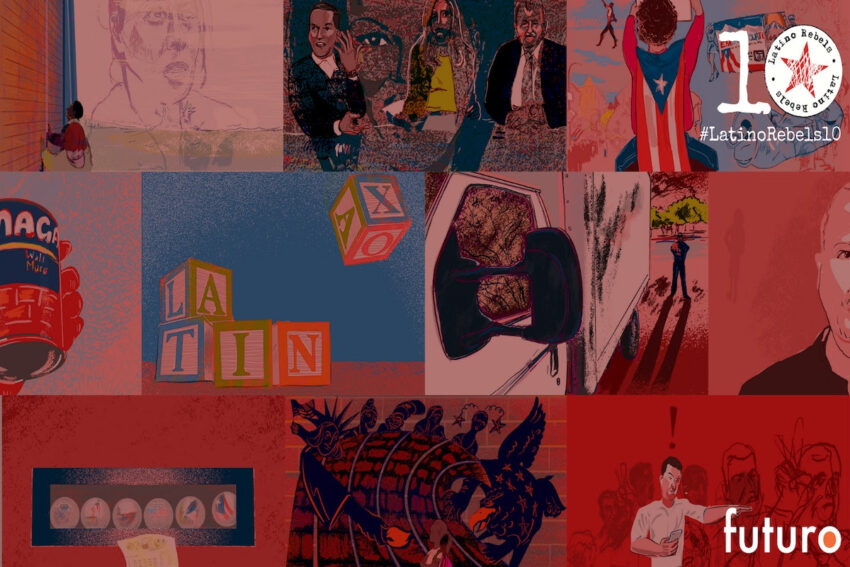
- “We’ve decided to pause Latino Rebels and take a break from our coverage while we work on a plan for Latino Rebels going forward,” Futuro Media announced Monday. “In the meantime, the website will not publish new stories, and we will put out our last new episode of Latino Rebels Radio — for now — on September 28.” On the 10th anniversary, founder Julio Ricardo Varela wrote, “ Latino Rebels has become a foundational tenet of the Latino digital journalism space. Love us, hate us, you can’t ignore us. In August, however, the parent Futuro Media announced layoffs and a scaling down of the organization.
-
-
- “
Lori Teresa Yearwood (pictured), a journalist who after an excruciating spiral into two years of homelessness returned to reporting and wrote both about her ordeal and about people dealing with similar economic hardships, died on Sept. 17, Richard Sandomir reported Sept.30 for The New York Times. “She was 57. Her death, in hospice care, was caused by ovarian cancer, said Sherry Long, a close friend.
-
- “Biden-Harris 2024 is announcing its first radio buy, the earliest and most significant investment in African American and Hispanic radio for a Democratic reelection campaign in history,” the campaign announced Tuesday. This ad is part of Team Biden-Harris’ 16-week, $25 million advertising campaign that is reaching key voters in battleground states and is the largest and earliest investment in Black and Latino media for a reelection campaign in history. . . .”
- “URL Media, a network of media organizations that serve, support and center communities of color and whose leadership and teams represent these populations, unveils a new website to amplify stories that are critical to the national discourse and centers these rapidly growing communities in the U.S.,” the organization announced Wednesday. “The platform developed uniquely for URL Media partners is a mix of manual curation and automated publishing, featuring Top Stories and Editor’s Pick as well as sections that capture partners’ content such as Power & Policy and History and Identity. . . . Advertisers will get a taste of how some brands have successfully partnered with URL, which has helped deliver almost $1M to BIPOC publishers. . . .”
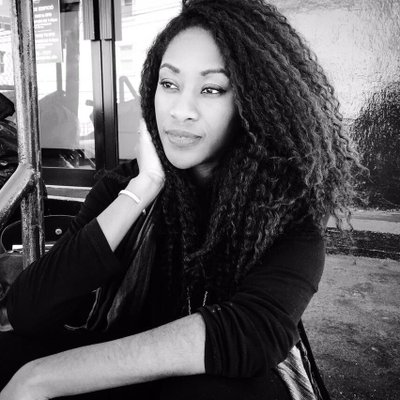 “The author of a book on Jamal Khashoggi, the Saudi journalist who was murdered by Saudi agents at the country’s consulate in Turkey, said the publisher HarperCollins had halted the editing process — forcing her to pull the book entirely. Karen Attiah (pictured), his editor at The Washington Post and the book’s author, made the announcement on Twitter Monday after the newspaper published an excerpt from the work,” Alex Nguyen reported Monday for the Daily Beast. A HarperCollins spokesperson did not respond to a request for comment.
“The author of a book on Jamal Khashoggi, the Saudi journalist who was murdered by Saudi agents at the country’s consulate in Turkey, said the publisher HarperCollins had halted the editing process — forcing her to pull the book entirely. Karen Attiah (pictured), his editor at The Washington Post and the book’s author, made the announcement on Twitter Monday after the newspaper published an excerpt from the work,” Alex Nguyen reported Monday for the Daily Beast. A HarperCollins spokesperson did not respond to a request for comment.
- Milton Allimadi, publisher of Black Star News and author of “Manufacturing Hate — How Africa Was Demonized in Western Media,” started a GoFundMe page Tuesday “to raise $3,000 so I can buy back the copyright for my book. “The company for some reason — I think I can guess why — without even notifying me stopped offering the printed version and is only selling digital. Prior to that many people had complained that they would wait as long as four to six months after ordering the physical book via Amazon. My own publisher seems reluctant to have the book widely available. Given the subject matter many friends have told me they’re not surprised.” The book was excerpted in Journal-isms in July 2021.
- “It was a night of heartfelt tributes and lighthearted jabs as the Detroit Chapter of the National Association of Black Journalists (NABJ) celebrated its 40th anniversary with a gala at MotorCity Casino and Hotel to honor the history of the chapter and its founding Black journalists,” Kylie Martin reported Sept. 30, updated Monday, for the Detroit Free Press. “The Sept. 24 event paid tribute to impact the chapter has made on journalists with scholarships, mentoring and professional development opportunities since its founding in 1982. . . .”
- “Bounce TV, the broadcast and multiplatform entertainment network serving African Americans, announced its latest initiative as part of a broader partnership with Big Brothers Big Sisters of America (BBBSA), a one-to-one youth mentoring organization in the United States,” Paul Greeley reported Thursday for TVNewsCheck. “The partnership will integrate BBBSA into an upcoming episode of Johnson, Bounce’s dramedy focusing on four lifelong best friends. . . .”
- “The Associated Press and theGrio have come together for a candid conversation about issues facing Black Americans ahead of the 2024 election and amid high levels of polarization, discussing topics ranging from targeted racial violence to barriers to voting,” Gary Fields reported Wednesday for the Associated Press. “The panel discussion, titled ‘Race and Democracy: The Facts and The Fury,’ is the first of its kind between the nation’s oldest wire service and Allen Media Group’s multimedia platform. It was to be carried Wednesday on APNews.com and air on theGrio Television Network Series “TheGrio with Marc Lamont Hill.”
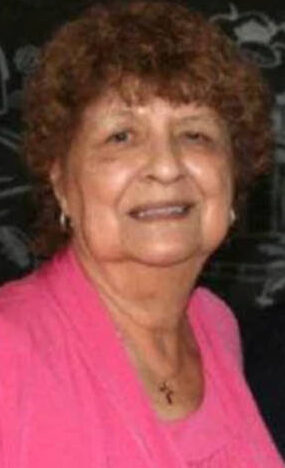 Dolores Sanchez (pictured), a longtime community leader who was the publisher of a chain of bilingual newspapers that provided a critical voice for residents in the predominantly Latino communities on Los Angeles’ Eastside and neighboring cities, has died,” Robert J. Lopez and Thomas Curwen reported Sunday for the Los Angeles Times. “She was 87. Sanchez had been ill in recent months and died Thursday, daughter Gloria Alvarez said. Former Los Angeles Mayor Antonio Villaraigosa described Sanchez as a towering figure whose contributions extended beyond journalism into political and social activism. . . .” Democracy Now!
Dolores Sanchez (pictured), a longtime community leader who was the publisher of a chain of bilingual newspapers that provided a critical voice for residents in the predominantly Latino communities on Los Angeles’ Eastside and neighboring cities, has died,” Robert J. Lopez and Thomas Curwen reported Sunday for the Los Angeles Times. “She was 87. Sanchez had been ill in recent months and died Thursday, daughter Gloria Alvarez said. Former Los Angeles Mayor Antonio Villaraigosa described Sanchez as a towering figure whose contributions extended beyond journalism into political and social activism. . . .” Democracy Now!
 Joe Johns (pictured) left CNN in February after 11 years as a Washington correspondent and in July, set up a law practice in the D.C. suburb of Fairfax County, Va., Johns tells Journal-isms. He is managing director at Johns Law Virginia LLCJ. “I graduated from American University’s law school in 2002. I always thought I might return to the law at some point. I am trying to make media law a primary focus, though not the only focus.”
Joe Johns (pictured) left CNN in February after 11 years as a Washington correspondent and in July, set up a law practice in the D.C. suburb of Fairfax County, Va., Johns tells Journal-isms. He is managing director at Johns Law Virginia LLCJ. “I graduated from American University’s law school in 2002. I always thought I might return to the law at some point. I am trying to make media law a primary focus, though not the only focus.”
- “Police in New Delhi have arrested the editor of a news website and one of its administrators after raiding the homes of journalists working for the site, which has been critical of Prime Minister Narendra Modi and his Hindu nationalist-led government,” Sheikh Saaliq reported Wednesday for the Associated Press. “NewsClick founder and editor Prabir Purkayastha and human resources chief Amit Chakravarty were arrested late Tuesday. Earlier, some journalists associated with the site were detained and had their digital devices seized during extensive raids that were part of an investigation into whether the news outlet had received funds from China. NewsClick denied any financial misconduct. . . .”

- “Latin America is full of stories about organized crime,” Katherine Pennacchio reported Wednesday for LatAm Journalism Review. “However, according to journalists who specialize in the subject, the vast majority of published stories focus on those at the top of the criminal pyramid and not on the people who suffer violence as collateral damage.” Josefina Salomón, co-founder and editorial director of In.Visibles, an independent, regional and bilingual news outlet, said, “We’re used to seeing this story from a single point of view, but we believe that the most relevant questions for the current security discussion have to do with all those other largely anonymous people: women who make up the largest proportion of people detained for micro-trafficking crimes, Indigenous communities kidnapped by criminal gangs in their own lands, officials who try to change the status quo but do not have the support they need, to name a few examples,” she added.
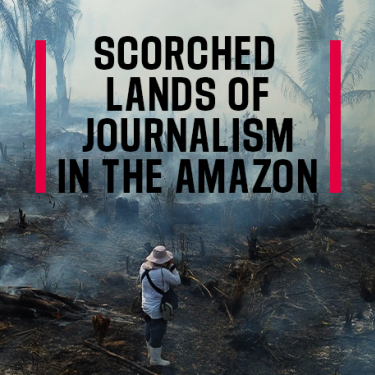 “What with harassment, threats and physical violence, reporters in the Amazon have ‘a target on their back,‘ ” Reporters Without Borders said this week in releasing “Scorched lands of journalism in the Amazon” containing “previously unpublished data on the obstacles to press freedom, particularly for local journalists, in the Brazilian Amazon, a region at the heart of the global climate challenge. . . . From 30 June 2022 to 30 June 2023, RSF identified 66 press freedom violations in the Brazilian Amazon’s nine states – violations that reveal the dynamics of the violence underlying the hostility to coverage of social and environmental issues. The region’s endemic violence, combined with political and economic pressures, creates conditions that push journalists to censor themselves. . . .”
“What with harassment, threats and physical violence, reporters in the Amazon have ‘a target on their back,‘ ” Reporters Without Borders said this week in releasing “Scorched lands of journalism in the Amazon” containing “previously unpublished data on the obstacles to press freedom, particularly for local journalists, in the Brazilian Amazon, a region at the heart of the global climate challenge. . . . From 30 June 2022 to 30 June 2023, RSF identified 66 press freedom violations in the Brazilian Amazon’s nine states – violations that reveal the dynamics of the violence underlying the hostility to coverage of social and environmental issues. The region’s endemic violence, combined with political and economic pressures, creates conditions that push journalists to censor themselves. . . .”
 “A court in the Democratic Republic of Congo denied provisional release to journalist Stanis Bujakera (pictured) on Monday, ignoring international bail standards and a global outcry over his continued detention at Kinshasa’s Makala prison. Bujakera’s case highlights the government’s increasing repression of the media less than three months before the general election,” Thomas Fessy reported Sept. 28 for Human Rights Watch. “Bujakera, 33, is deputy director of the Congolese online news outlet Actualite.cd, reporter for Jeune Afrique and the international news agency Reuters. He is the most followed journalist on social media in the country and his professionalism has been praised by peers and readers, including government officials, foreign diplomats, and researchers. . . .”
“A court in the Democratic Republic of Congo denied provisional release to journalist Stanis Bujakera (pictured) on Monday, ignoring international bail standards and a global outcry over his continued detention at Kinshasa’s Makala prison. Bujakera’s case highlights the government’s increasing repression of the media less than three months before the general election,” Thomas Fessy reported Sept. 28 for Human Rights Watch. “Bujakera, 33, is deputy director of the Congolese online news outlet Actualite.cd, reporter for Jeune Afrique and the international news agency Reuters. He is the most followed journalist on social media in the country and his professionalism has been praised by peers and readers, including government officials, foreign diplomats, and researchers. . . .”
To subscribe at no cost, please send an email to journal-isms+subscribe@groups.io and say who you are.
Facebook users: “Like” “Richard Prince’s Journal-isms” on Facebook.
Follow Richard Prince on Twitter @princeeditor
Richard Prince’s Journal-isms originates from Washington. It began in print before most of us knew what the internet was, and it would like to be referred to as a “column.” Any views expressed in the column are those of the person or organization quoted and not those of any other entity. Send tips, comments and concerns to Richard Prince at journal-isms+owner@
View previous columns (after Feb. 13, 2016).
View previous columns (before Feb. 13, 2016)
- Diversity’s Greatest Hits, 2018 (Jan. 4, 2019)
- Book Notes: Is Taking a Knee Really All That? (Dec. 20, 2018)
- Book Notes: Challenging ’45’ and Proudly Telling the Story (Dec. 18, 2018)
- Book Notes: Get Down With the Legends! (Dec. 11, 2018)
- Journalist Richard Prince w/Joe Madison (Sirius XM, April 18, 2018) (podcast)
- Richard Prince (journalist) (Wikipedia entry)
- February 2018 Podcast: Richard “Dick” Prince on the need for newsroom diversity (Gabriel Greschler, Student Press Law Center, Feb. 26, 2018)
- Diversity’s Greatest Hits, 2017 — Where Will They Take Us in the Year Ahead?
- Book Notes: Best Sellers, Uncovered Treasures, Overlooked History (Dec. 19, 2017)
- An advocate for diversity in the media is still pressing for representation, (Courtland Milloy, Washington Post, Nov. 28, 2017)
- Morgan Global Journalism Review: Journal-isms Journeys On (Aug. 31, 2017)
- Diversity’s Greatest Hits, 2016
- Book Notes: 16 Writers Dish About ‘Chelle,’ the First Lady
- Book Notes: From Coretta to Barack, and in Search of the Godfather
- Journal-isms’ Richard Prince Wants Your Ideas (FishbowlDC, Feb. 26, 2016)
- “JOURNAL-ISMS” IS LATEST TO BEAR BRUNT OF INDUSTRY’S ECONOMIC WOES (Feb. 19, 2016)
- Richard Prince with Charlayne Hunter-Gault, “PBS NewsHour,” “What stagnant diversity means for America’s newsrooms” (Dec. 15, 2015)
- Book Notes: Journalists Follow Their Passions
- Book Notes: Journalists Who Rocked Their World
- Book Notes: Hands Up! Read This!
- Book Notes: New Cosby Bio Looks Like a Best-Seller
- Journo-diversity advocate turns attention to Ezra Klein project (Erik Wemple, Washington Post, March 5, 2014)


